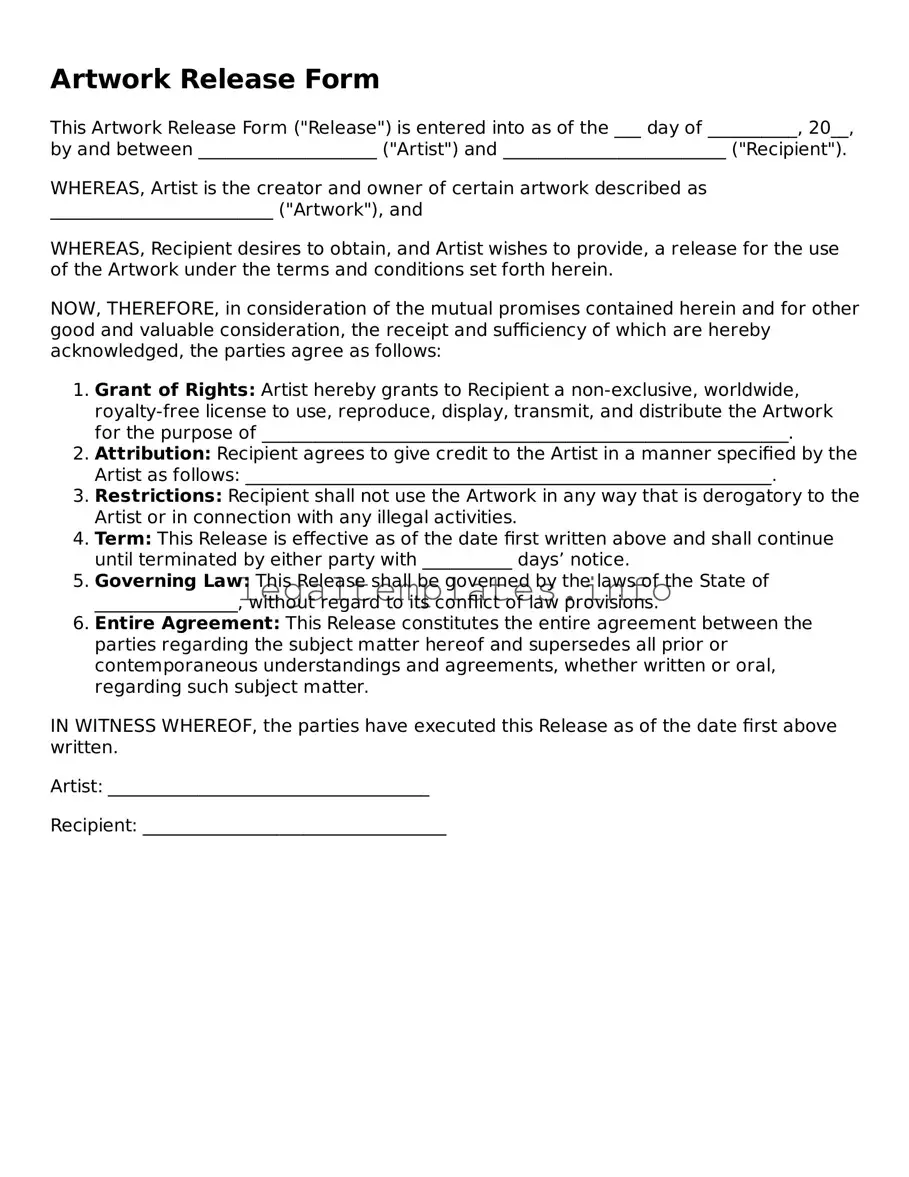What is an Artwork Release Form?
An Artwork Release Form is a legal document that gives permission for artworks to be used by someone other than the creator. This form typically covers the use of the artwork for specific purposes, ensuring that the creator's rights are protected while allowing their work to be shared or utilized under agreed conditions.
When do I need to use an Artwork Release Form?
This form should be used whenever someone wants to use artwork created by another person. This is common in situations like publishing, producing merchandise, showcasing in galleries, or using the artwork online. It clearly outlines permissions granted by the artist to the user, avoiding misunderstandings about the use of the artwork.
What information should be included in an Artwork Release Form?
The form should clearly state the names of the artist and the individual or entity wishing to use the artwork. It should also describe the artwork in detail, specify the types of uses allowed, the duration of the permission, any compensation for the artist, and any other terms and conditions agreed upon by both parties.
Do I need a lawyer to prepare an Artwork Release Form?
While it's always wise to consult with a legal professional to ensure that your rights are fully protected, many people use template forms or adapt existing forms to their needs. A lawyer can provide advice specific to your situation and help tailor the form to ensure all legal bases are covered.
Can an Artwork Release Form be revoked?
Yes, an Artwork Release Form can include terms under which the agreement can be terminated or revoked. This might include breach of the agreement terms by the user, at the request of the artist under certain conditions, or after a set period of time. It's important that these terms are clearly laid out in the form.
What happens if someone uses artwork without an Artwork Release Form?
Using artwork without permission can lead to legal action being taken by the artist. This might involve demands to cease using the artwork, monetary compensation for unauthorized use, or other legal remedies. Obtaining an Artwork Release Form before using artwork is always recommended to avoid such disputes.
Is an Artwork Release Form different from a Copyright Transfer?
Yes, an Artwork Release Form usually grants permission for specific use(s) of the artwork without transferring copyright ownership from the artist to the user. A Copyright Transfer Agreement would transfer the artist's rights entirely. It's important to understand the distinction to ensure the appropriate agreement is used for your purposes.
